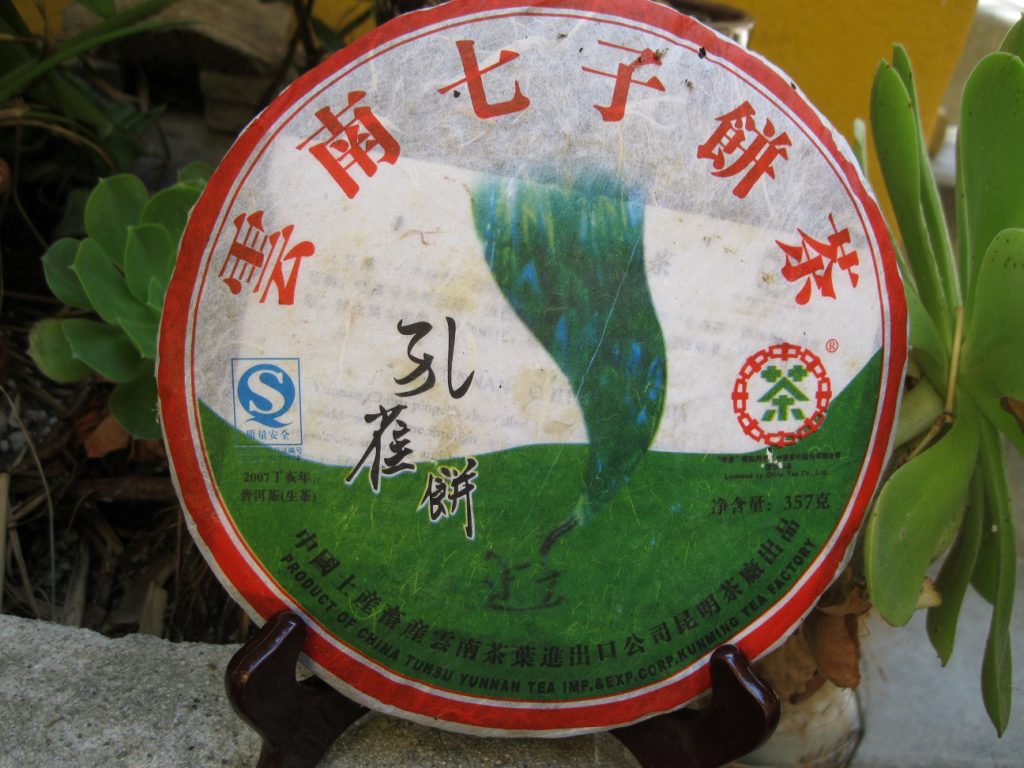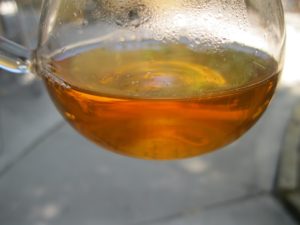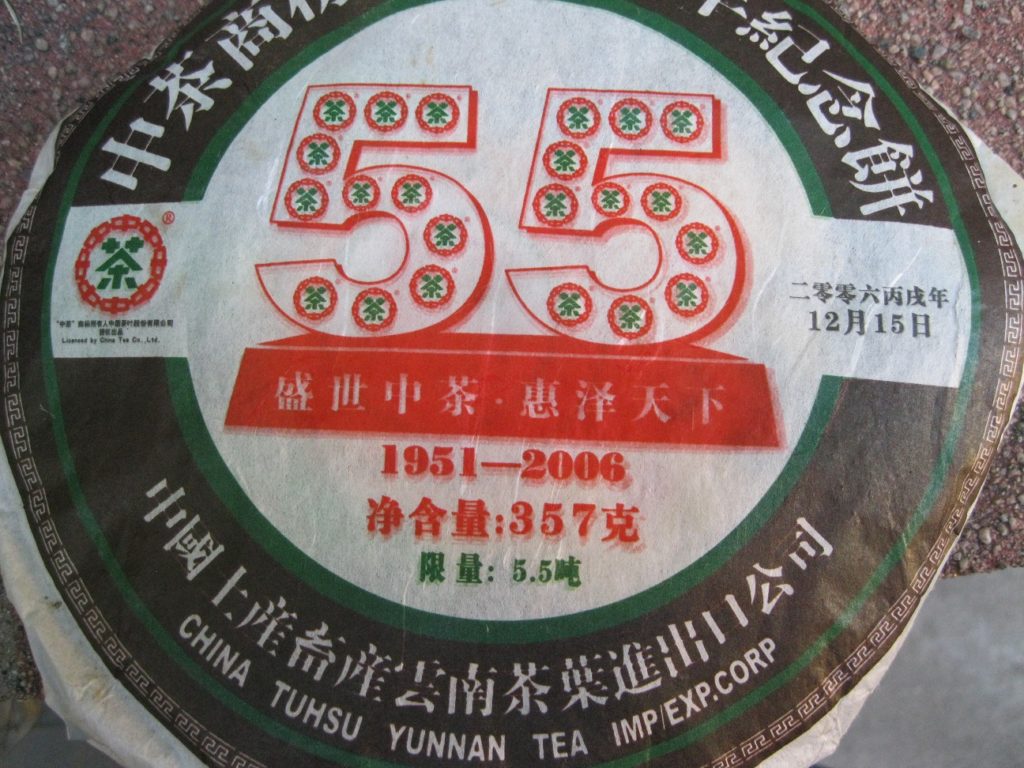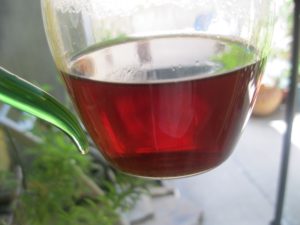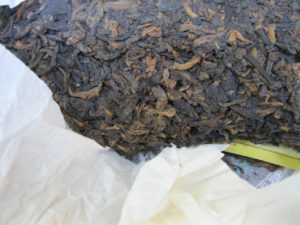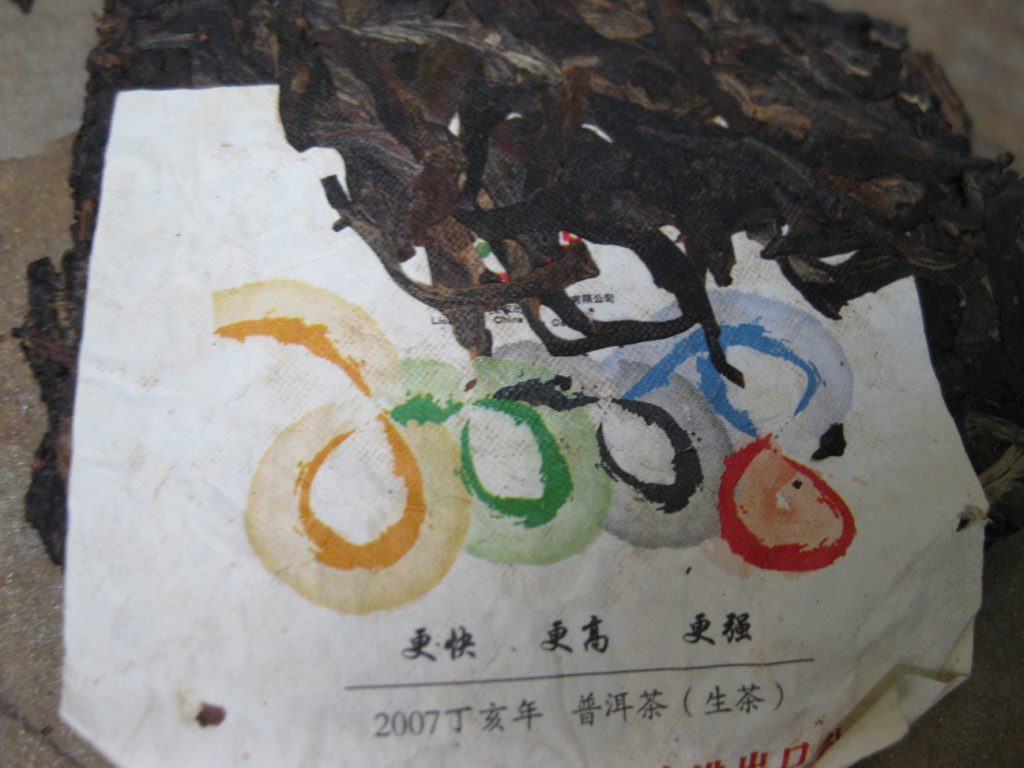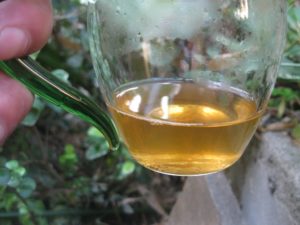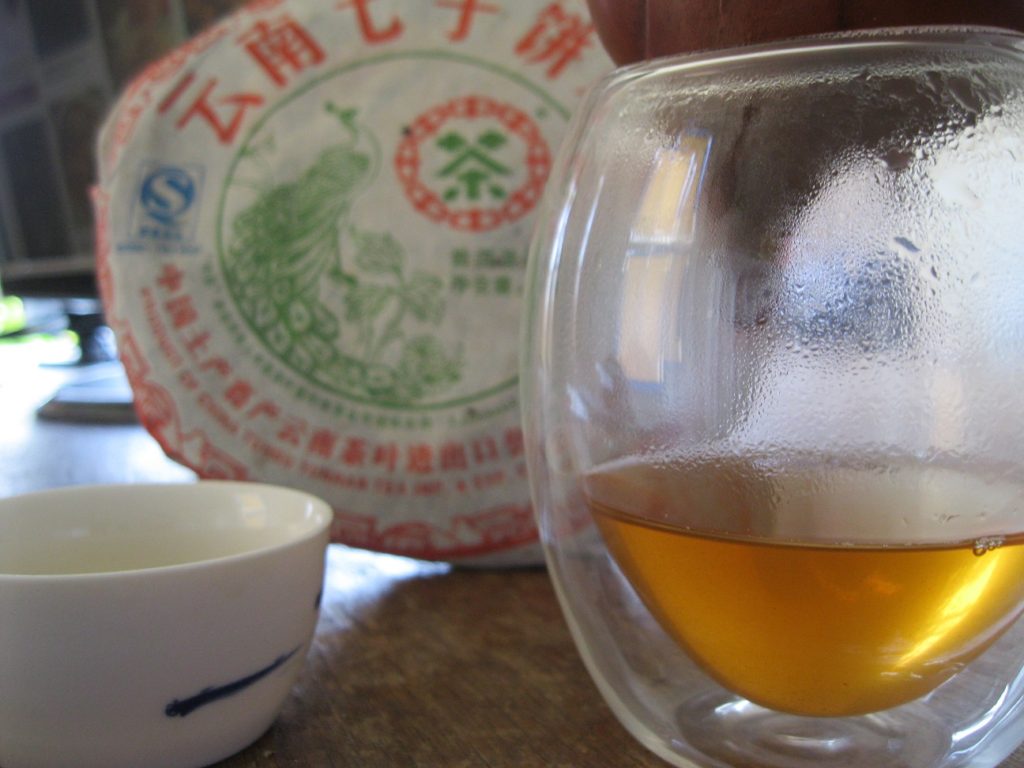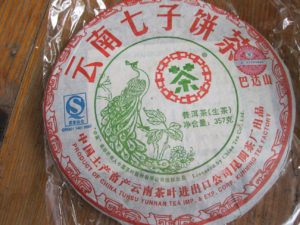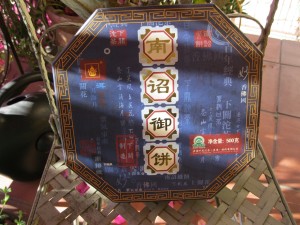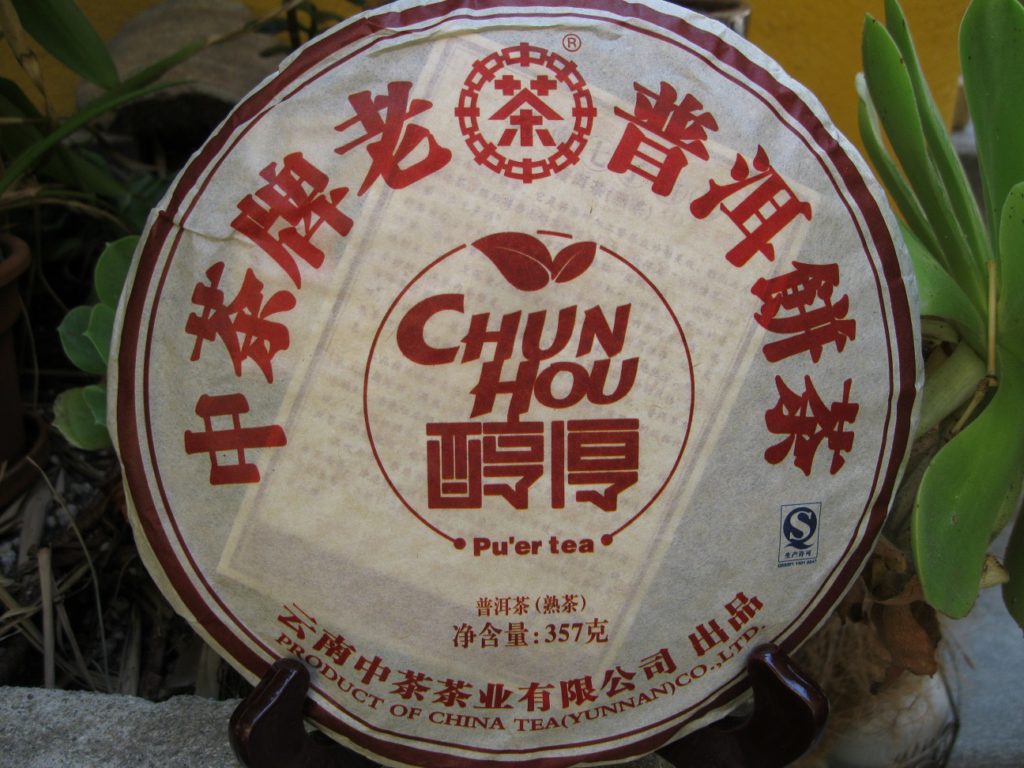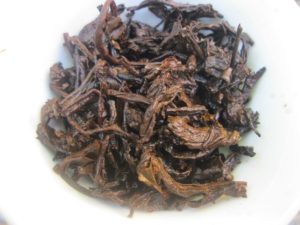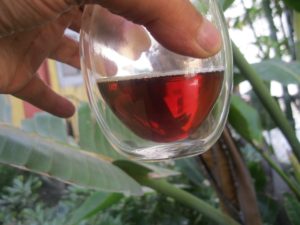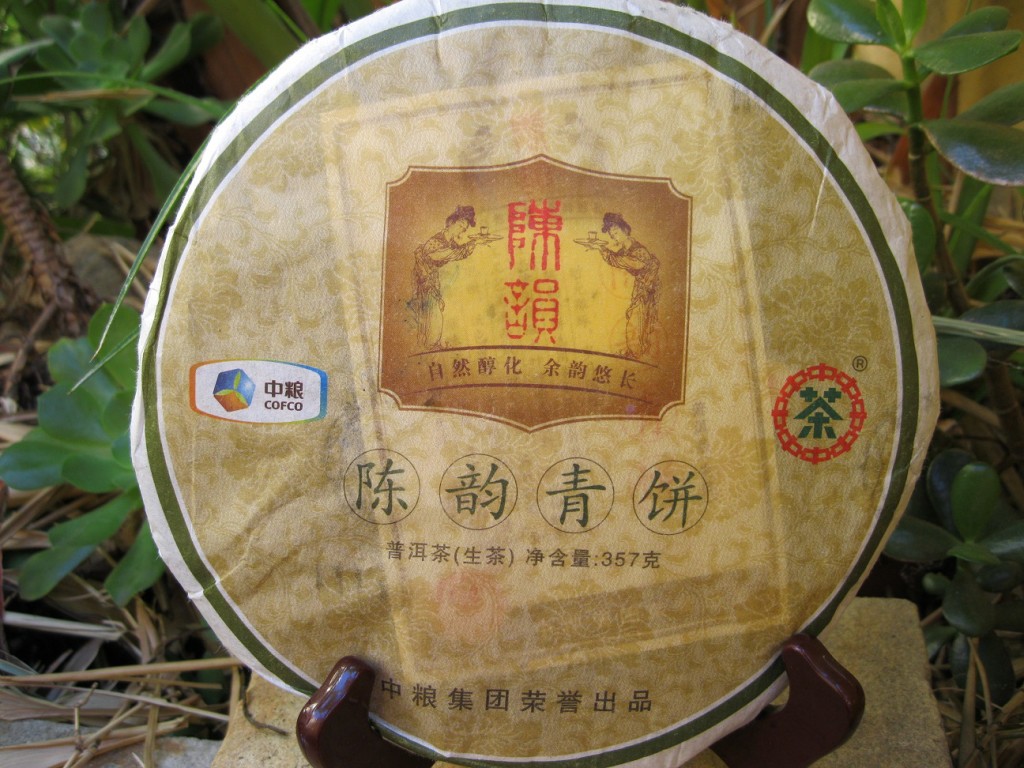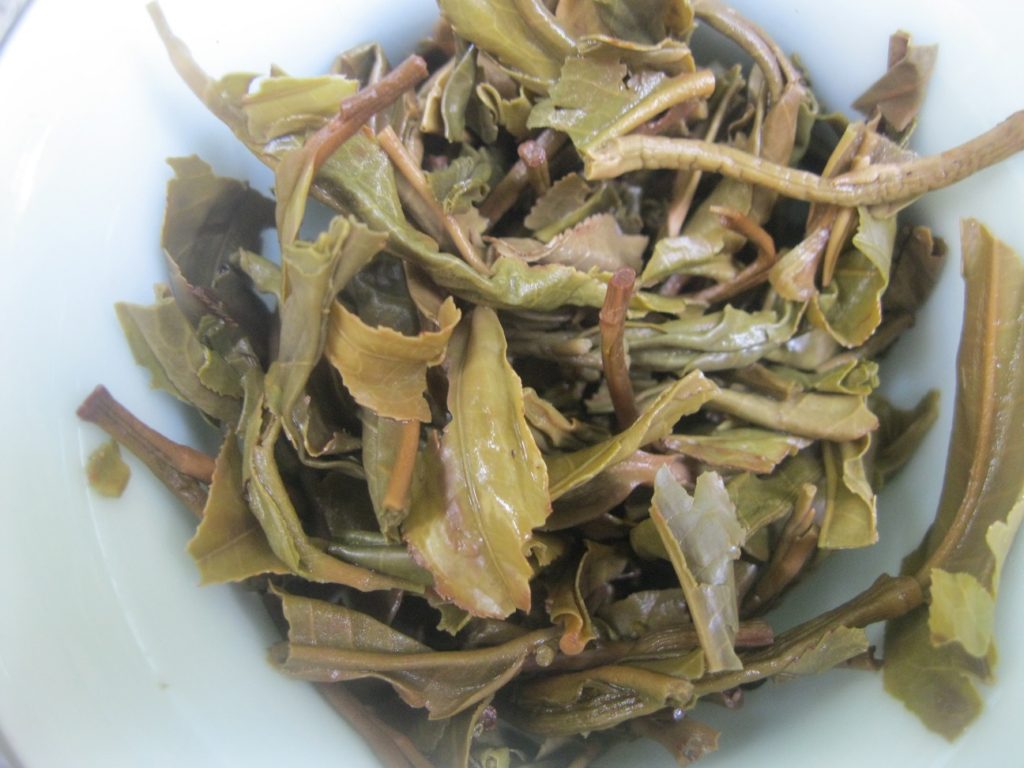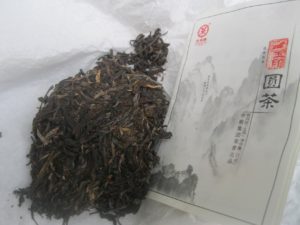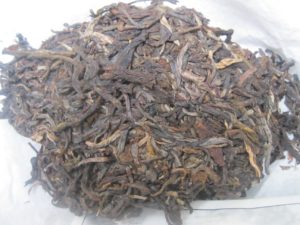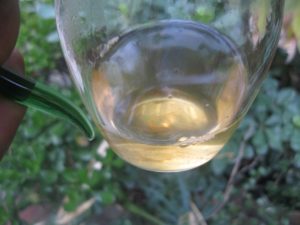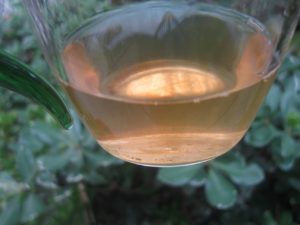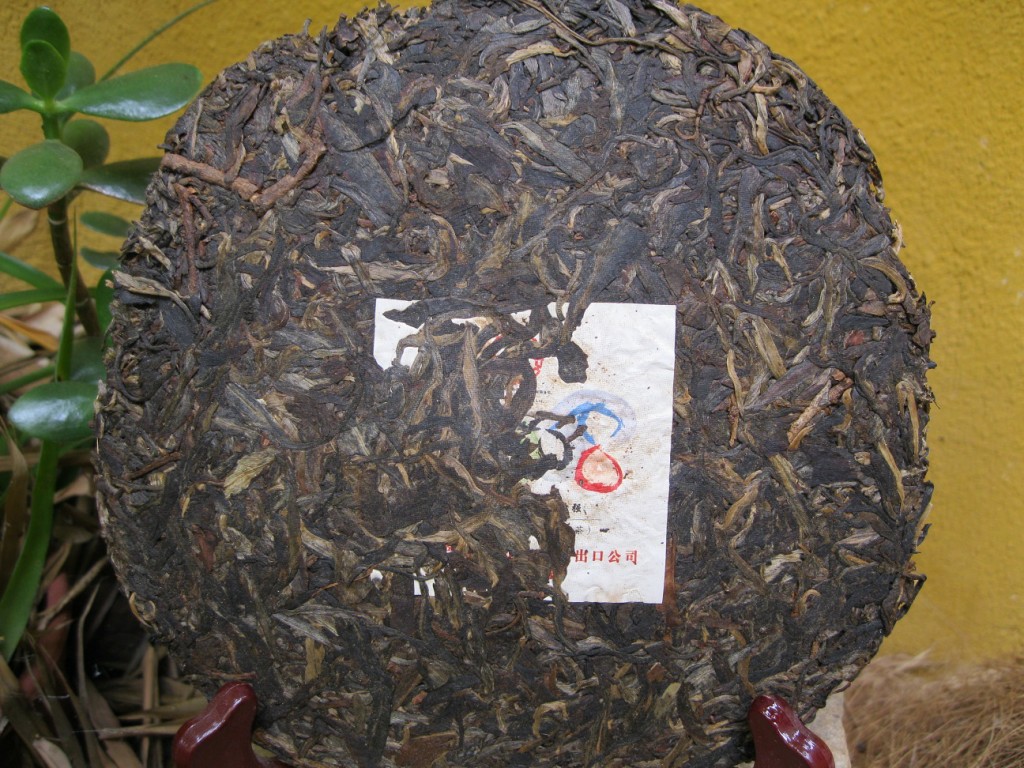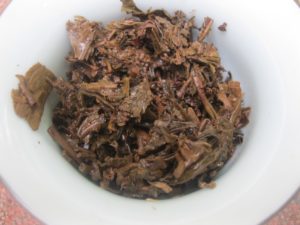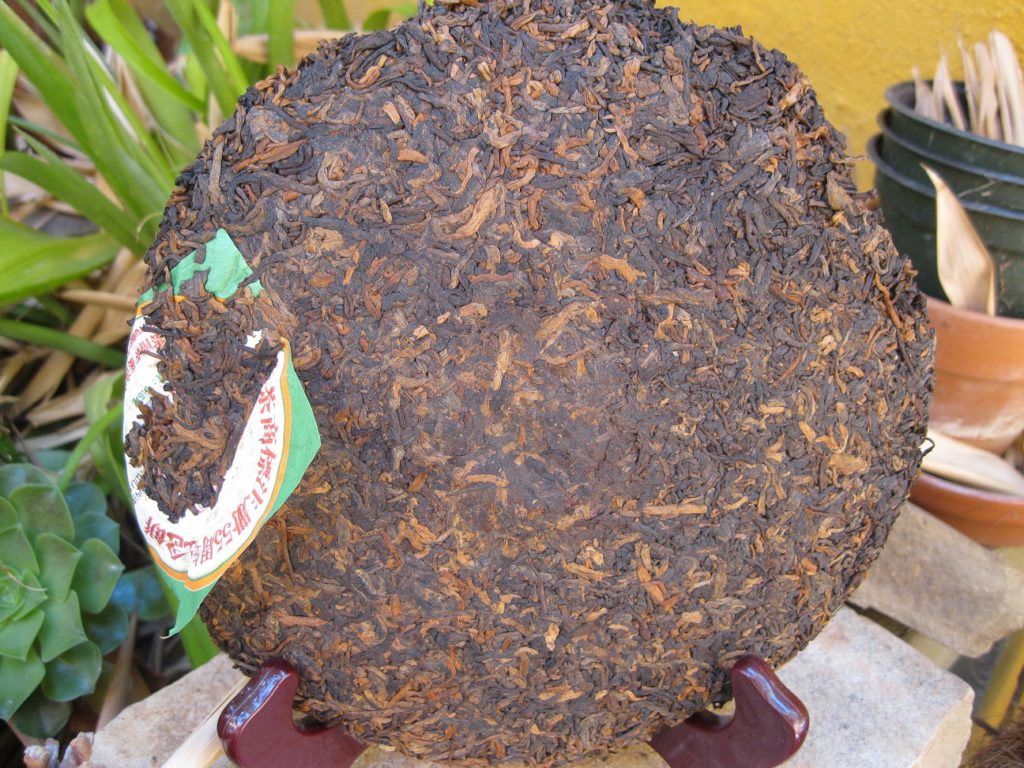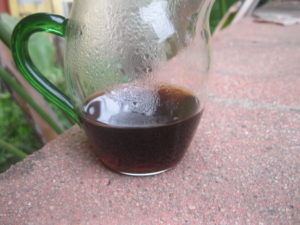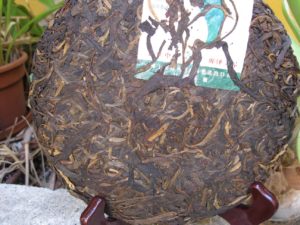Update: ’07 Peacock Puerh Cake
Here’s an update on the ’07 Peacock puerh cake, by Kunming Tea Factory, i.e., the venerable Zhongcha, aka China Tea. It just dawned on me that Zhongcha means China Tea. Anyway, the ’07 is one among three ’07 Peacocks edition in my possession. The only one for sale is this, though it is arguably the least tasty of the three.
Puerh Nostalgia
When I first acquired the ’07 Peacock, I drank quite a bit of it. It called my name regularly, not because it was particularly delicious but because it was just that cryptic. I’ve called it “Thick Zen” in another post. One of the things that particularly struck me about it was just how waxy rich the leaves were. It just looked like it had a lot of stuff in it, though the Zen taste did seem more than a shade incongruous.
It seemed plausible that the Peacock would age into its puerh relative the Blue Mark. This means it would develop into a more aged-taste Zen treasure. This week it started showing signs that it would actually transform into the Root Beer class. Hooray! It’s still at its incipient stages. At the end of the hot season, by Dec ’19, it’s possible that it will be a degree or two deeper. Another 12 to 16 mths, I anticipate that the root beer will be much stronger.

